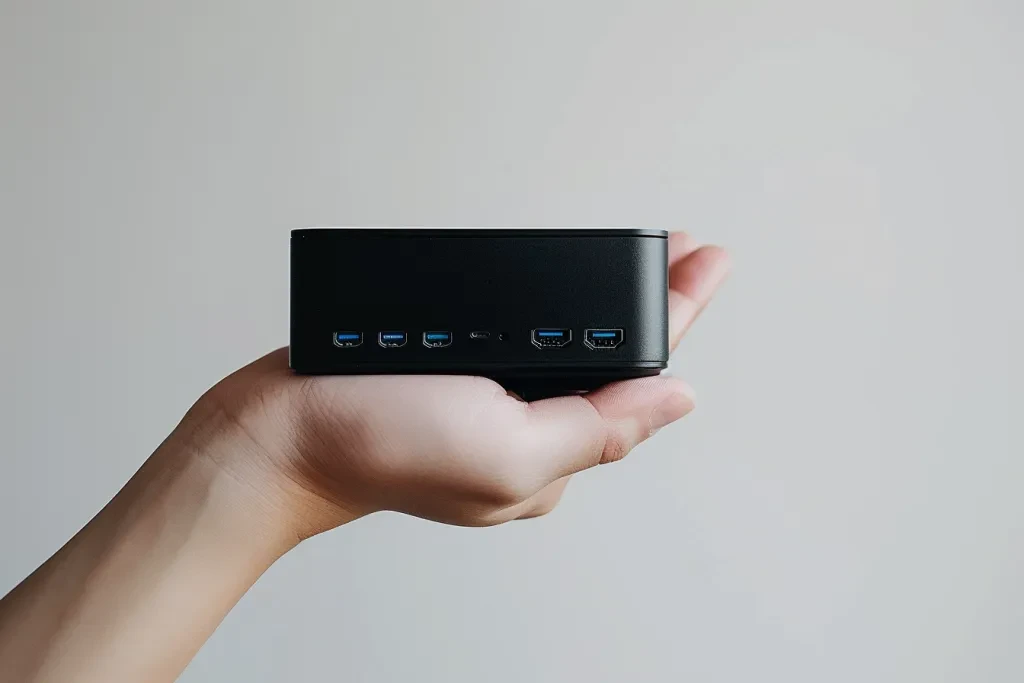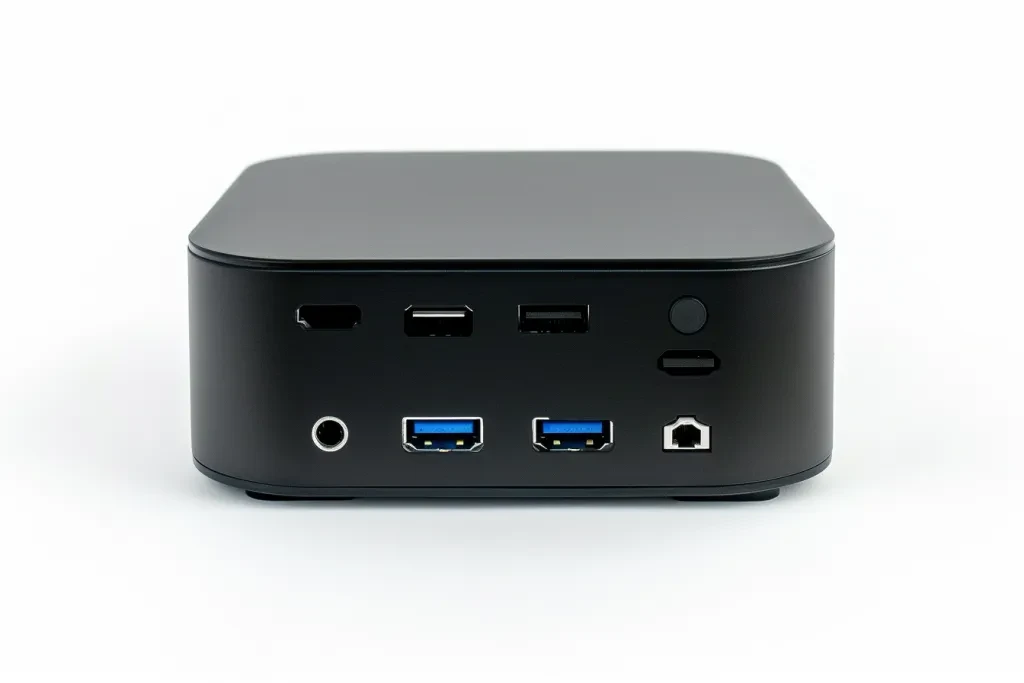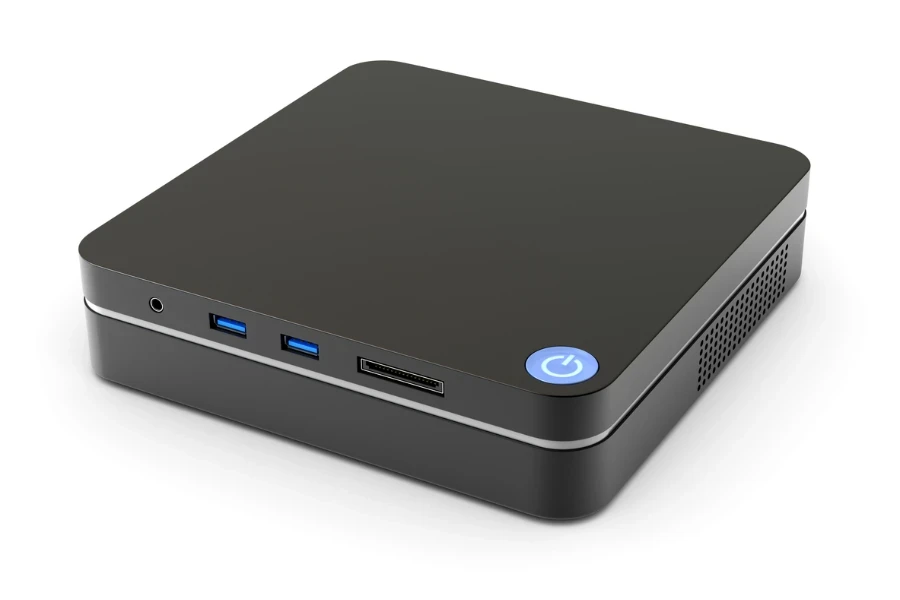In the vast world of computing, Mini PCs have emerged as a compact yet powerful solution for users seeking space efficiency without compromising performance. These diminutive devices pack a considerable punch, offering a versatile range of uses from home entertainment to office productivity. This article delves into what Mini PCs are, how they operate, their advantages and limitations, and guides on selection and usage.
Table of Contents:
– What is a Mini PC?
– How does a Mini PC work?
– Benefits and drawbacks of Mini PCs
– How to choose a Mini PC
– How to use a Mini PC
What is a Mini PC?

A Mini PC, as the name suggests, is a small-form-factor computer that offers many of the same capabilities as a traditional desktop PC but in a much more compact and space-saving design. Unlike bulky desktop towers, Mini PCs can fit almost anywhere, from behind a monitor to a small corner on a desk, making them ideal for users with limited space. Despite their small size, they are fully functional computers that can perform a wide range of tasks, from basic computing needs like web browsing and document editing to more demanding tasks such as graphic design and light gaming.
Mini PCs come in various configurations, offering different levels of processing power, memory, storage, and connectivity options. They are equipped with standard computing components, including CPUs, GPUs, RAM, and storage drives, all condensed into a tiny chassis. Some models are even customizable, allowing users to upgrade certain components like RAM and storage, providing a level of flexibility not always found in traditional laptops or all-in-one computers.
How does a Mini PC work?

The working principle of a Mini PC is similar to that of a standard desktop computer but optimized for space efficiency. At its core, a Mini PC uses a motherboard specifically designed to fit into a small chassis, along with miniaturized versions of standard components. The CPU in a Mini PC is often a low-power variant, which helps reduce heat output and allows for smaller cooling solutions. Despite their size, Mini PCs can pack solid state drives (SSDs), which offer speedy boot times and quick data access, enhancing the overall performance.
Connectivity is a strong suit for Mini PCs. They come equipped with a variety of ports, including USB, HDMI, Ethernet, and sometimes Thunderbolt, allowing them to connect to multiple peripherals and displays. Wireless connectivity through Wi-Fi and Bluetooth is also standard, ensuring they can easily integrate into any workspace or home environment. The compact design does not hinder a Mini PC’s ability to function as a fully operational computer, capable of running both lightweight and more demanding software applications.
Benefits and drawbacks of Mini PCs

The primary benefit of Mini PCs is their space-saving design. They are ideal for cluttered desks, small apartments, or any setting where space is at a premium. Despite their small size, they offer considerable computing power, sufficient for everyday tasks and more. Mini PCs are also energy-efficient, consuming less power than their full-sized counterparts, which can lead to savings on electricity bills.
However, Mini PCs have their limitations. Their compact size means there’s less room for cooling, which can lead to thermal throttling under heavy loads, potentially impacting performance. Additionally, while some Mini PCs allow for component upgrades, they are generally not as customizable as traditional desktop PCs. This can make them less appealing to users who prioritize the ability to upgrade their systems over time.
How to choose a Mini PC

Selecting the right Mini PC depends on your specific needs and budget. Consider what you’ll primarily use the Mini PC for: basic tasks like web browsing and document editing require less processing power, while gaming or content creation will need more robust hardware. Look for a Mini PC with a solid CPU, sufficient RAM (at least 8GB), and ample storage space. Connectivity options are also important; ensure the Mini PC has the necessary ports for your peripherals and displays.
Consider the Mini PC’s upgradeability. Some models allow you to add more RAM or swap out the storage drive, offering a way to extend the device’s lifespan. Finally, factor in the operating system. Most Mini PCs come with Windows pre-installed, but there are also Linux options for those who prefer it or are looking for a more budget-friendly solution.
How to use a Mini PC

Setting up a Mini PC is straightforward. First, connect it to a monitor, keyboard, and mouse. Then, plug in the power adapter and any other peripherals you need, such as a printer or external hard drive. Once everything is connected, power on the Mini PC and follow the on-screen instructions to complete the setup process, including configuring the operating system and connecting to Wi-Fi.
Mini PCs are versatile and can be used for a variety of applications. They make excellent home media centers, capable of streaming high-definition video to your TV. They’re also suitable for light gaming, office work, and as personal servers. With the right setup, a Mini PC can even support virtualization, allowing you to run multiple operating systems simultaneously for development or testing purposes.
Conclusion:
Mini PCs represent a significant shift in the computing landscape, offering a powerful and versatile computing solution in a compact, space-saving design. Whether you’re looking to declutter your workspace, save on energy costs, or simply prefer a minimalist setup, a Mini PC could be the perfect choice. By understanding how they work, their benefits and limitations, and how to choose and use one, you can make the most out of this compact computing revolution.



